Best modelling amps 2025: Variety is the spice of life with these awesome amplifiers
If you’re the type of guitar player who likes to regularly change their sound, then you need the best modelling amps
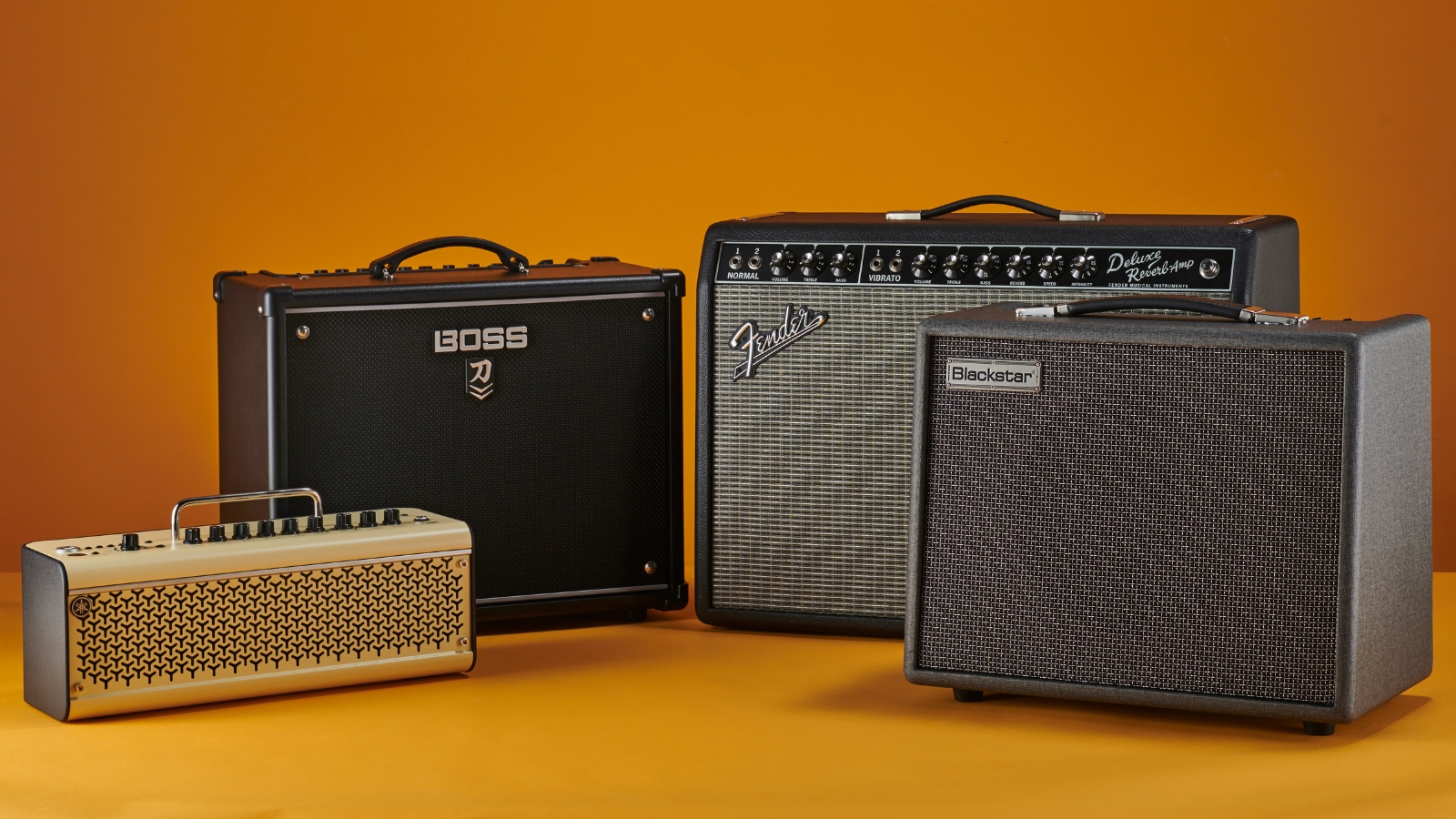
If you’re the type of guitar player who wants every available tone and all the effects, then you should have a look at the best modelling amps if you want to have your cake and eat it. These powerhouse guitar amps will enable you to dial in any tone you like, from the warm saturation of classic rock right through to the tight high gain of modern metal.
The modern modelling amp is one of the most versatile money can buy. They work well as practice amps for home use, many feature direct or USB outs for recording, and there are plenty with the power to play gigs. A great modelling amp can take you from your very first chords right through to your first show, all the while providing great sound and usability.
Whether you’re looking for your first amp or something that you can practice at home with in lieu of your loud tube monster, we’ve selected the very best of the bunch to choose from. If you’re new to modelling amps, then be sure to check out our buying advice section. If you just want to get to the good stuff, then keep scrolling to see our top picks.
Best modelling amps: MusicRadar’s Choice
It’s fast becoming a modern classic and tops many a ‘best of’ list, we’re talking about the Boss Katana 100 of course. It’s got fantastic amp tones that cover everything from pristine clean to high gain metal, as well as a suite of Boss’ top-quality effects built-in, making it an amp and pedalboard all in one.
Looking for a traditional amp tone in a modelling format? Then the Fender Tone Master Twin Reverb will no doubt satiate your lust for tube tone. It’s a classic amplifier that’s been on a diet, removing its characteristic back-breaking weight whilst retaining all of the glorious guitar tones.
Best modelling amps: Product guide

Specifications
Reasons to buy
Reasons to avoid
We hate to be predictable, but there’s just no getting around the fact that the Boss Katana range is one of the best modern guitar amps, period. This version gives you 100 watts of power and a 12-inch speaker for incredible power and tone.
Every possible amp sound you could hope for is covered here, from Fender-type cleans to AC30-esque chime, all the way to Orange crunch sounds and Soldano-inspired leads. Whether you play Delta blues or djent, the Katana can do it all.
Also included is a suite of Boss’ studio-grade effects that include raucous reverbs and dynamic delays aplenty. You can run five of these effects simultaneously, essentially putting a full pedalboard at your disposal. Recording and headphone outs round out this amplifier's immense feature set.
Read our full Boss Katana 100 review
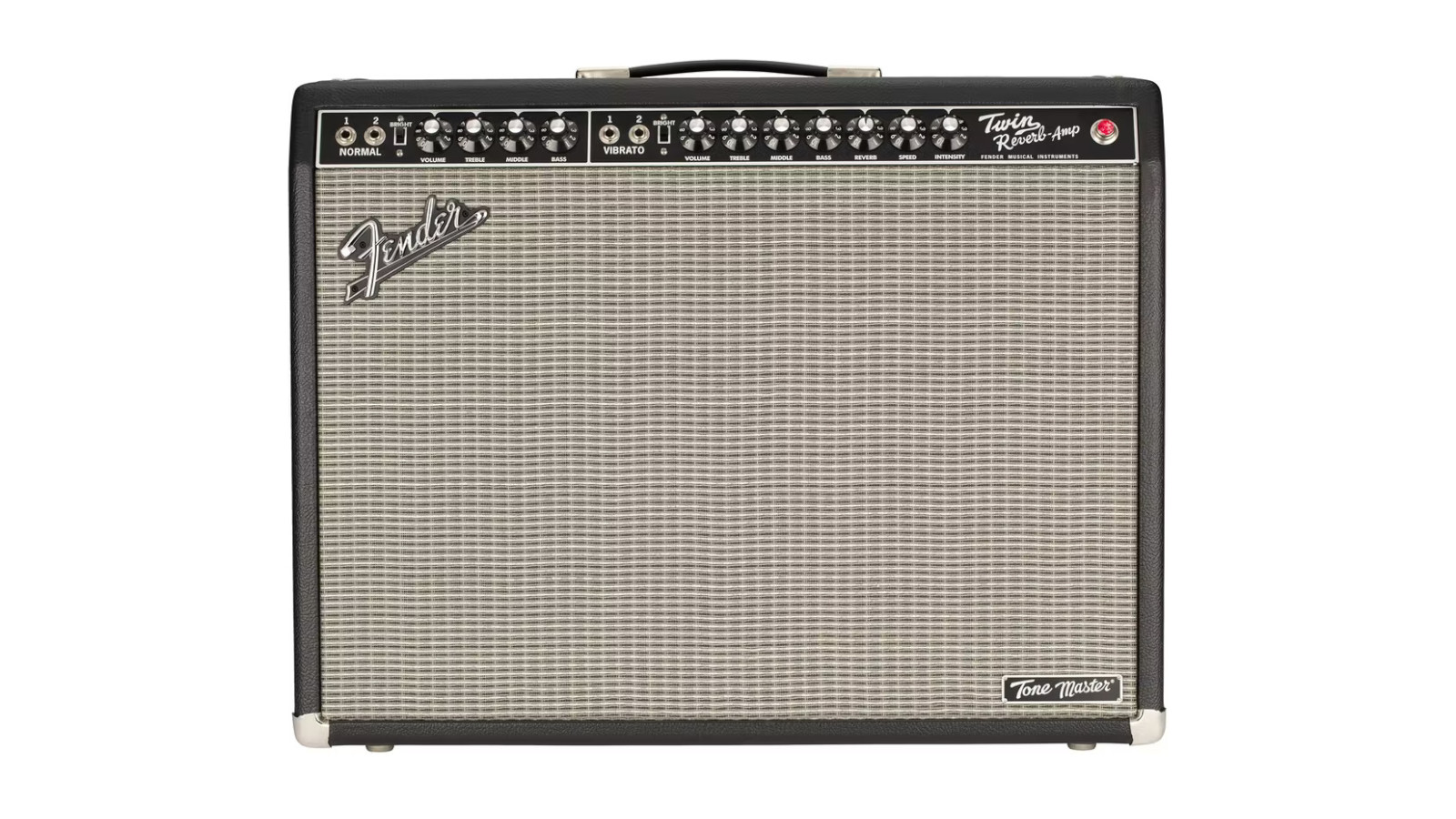
2. Fender Tonemaster Twin Reverb
Our expert review:
Specifications
Reasons to buy
Reasons to avoid
Where the Katana aims to do many things, the Fender Tonemaster Twin Reverb opts to do one thing really well. The Deluxe Reverb is one of the most sought-after sounds in the world of guitar, and now you can get it at a lower cost and a 50% weight reduction.
This amp features all the rich bass and sparkly treble you’d expect from a proper Twin Reverb amp, and when you crank it the tube breakup emulation is uncanny. The spread of the two 12-inch speakers when paired with the onboard reverb and tremolo is delicious.
Power attenuation options mean you can enjoy vintage Fender tube tone at manageable levels, whilst the IR outputs are impeccably voiced. Whether recording, practising or gigging, this amp is one of the best tube amp emulations we’ve ever heard.

3. Blackstar Silverline Standard
Our expert review:
Specifications
Reasons to buy
Reasons to avoid
Despite the Blackstar Silverline Standard’s small size, it’s got a deceptively loud bark. Featuring six accurate recreations of famous tube amps, no matter which side of the pond you like your guitar tone from, there’s a sound for you here.
With the classic British sounds of EL34 and EL84 tube amps to match the American 6L6 and 6V6 tones, you’ve got everything you could possibly need, and all painstakingly recreated. Don’t let the small speaker size fool you either, this amp has some hefty low-end considering it’s only a 1 x 10”.
The built-in modulation, delay, and reverb effects sound phenomenal whilst USB connectivity allows you to use these great tones in your favourite DAW, great for recording your riffs. If you need to practise quietly there’s a headphone out too.
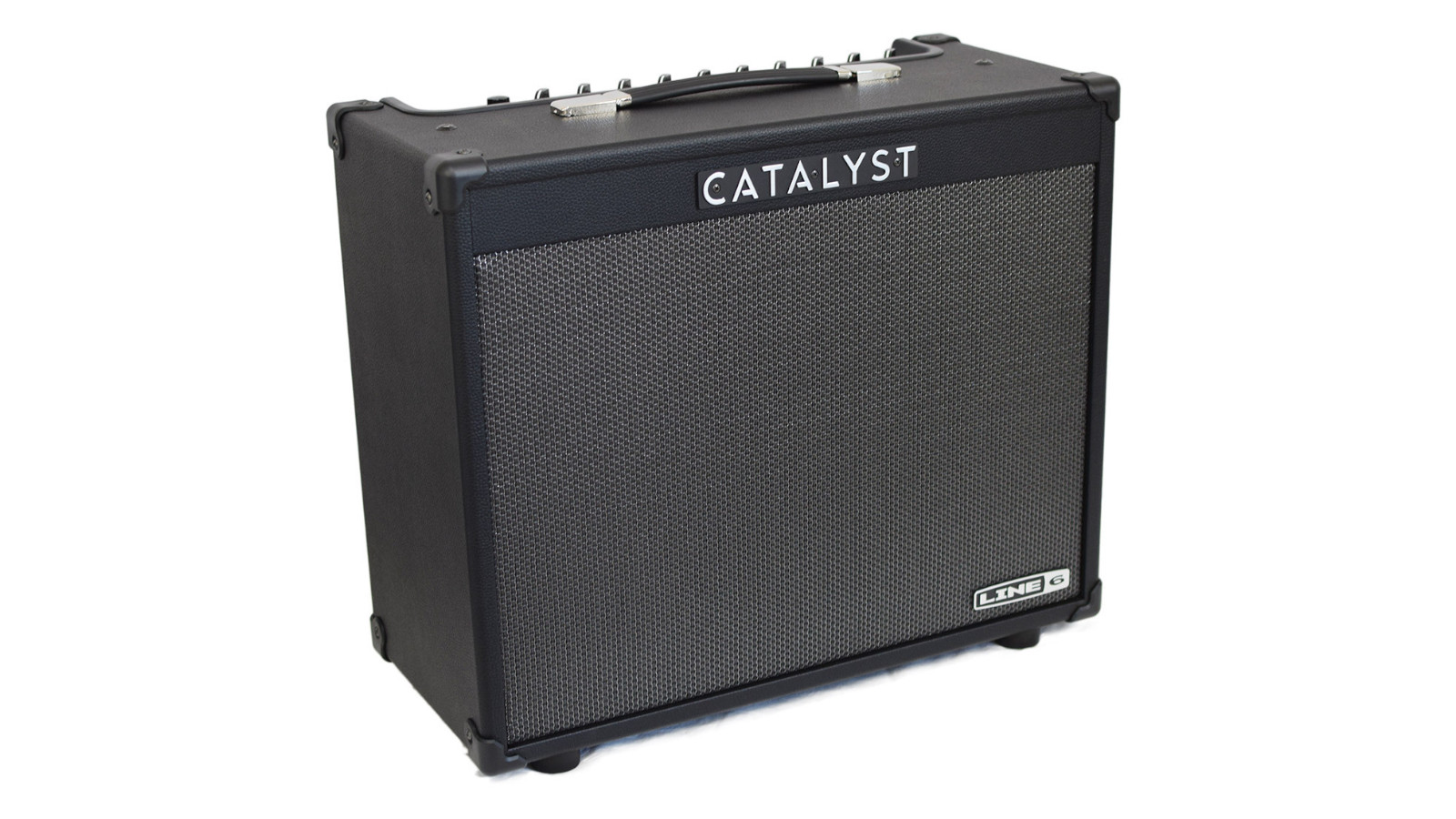
4. Line 6 Catalyst 100
Our expert review:
Specifications
Reasons to buy
Reasons to avoid
The Line 6 Catalyst 100 comes from one of the original modelling amp manufacturers, so it’s got serious heritage. With an easy-to-use layout and great quality effects, this powerful amp is great for recording or gigging.
If you know Line 6 you might be surprised to find there’s only one real high gain sound here as the majority of the amp models are in fact clean or clean-ish tones. We found the Boutique setting to be particularly delicious, but there's a huge array of British and American flavoured sounds here.
A full suite of Line 6’s renowned HX effects gives you luscious delays, cavernous reverbs, and shifting modulation effects, giving you plenty of inspiration for new ideas. USB connectivity allows you to deep edit or record straight to your computer.
Read our review of the Line 6 Catalyst 100
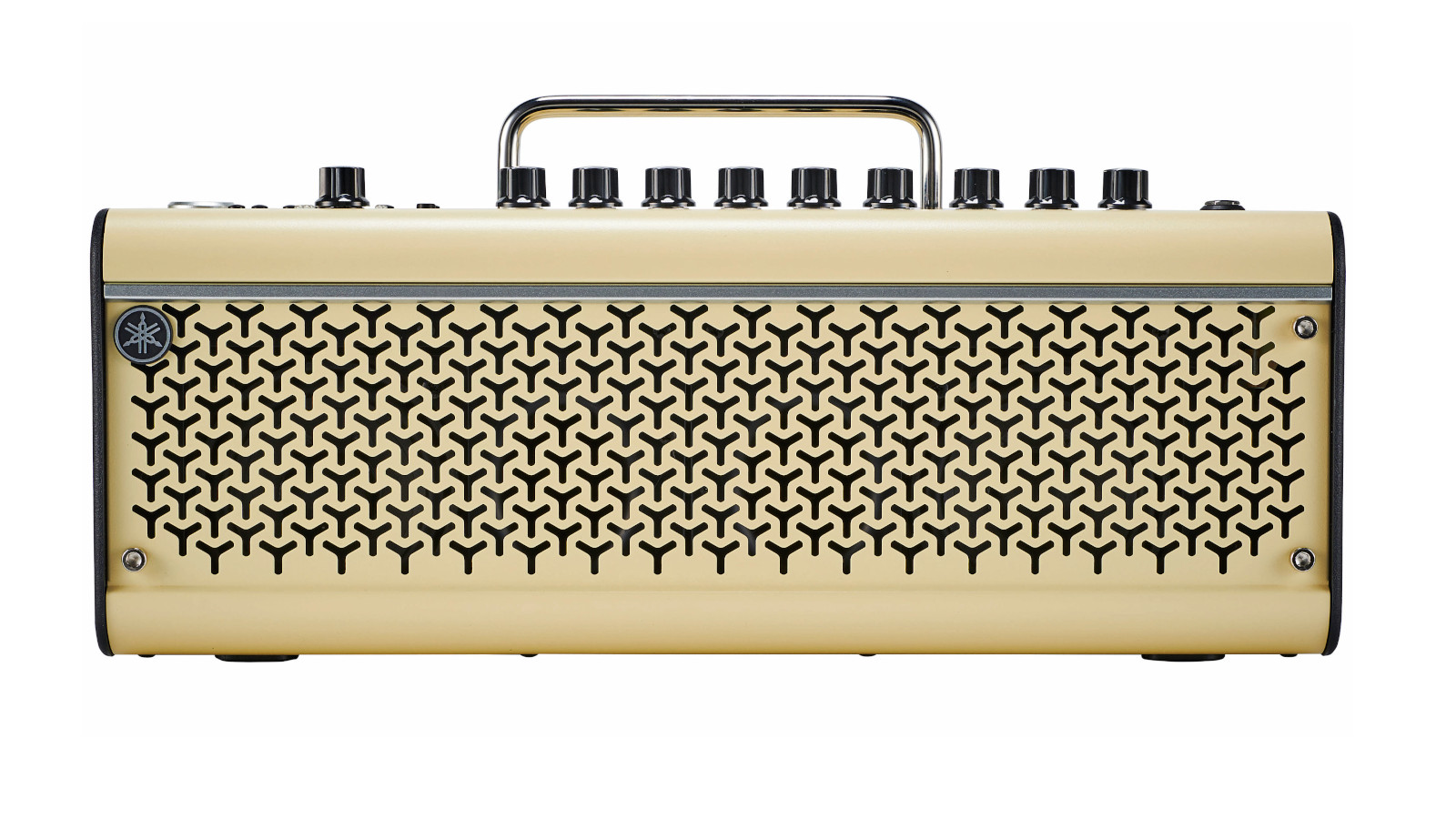
5. Yamaha THR30II
Our expert review:
Specifications
Reasons to buy
Reasons to avoid
Yamaha’s THR30II is the latest iteration of the amp range that spawned a whole new genre, the desktop amp. It’s a combination of great sound and good looks that gives guitar players the option to jam in their living room without upsetting the feng shui.
Utilising something called ‘Virtual Circuit Modelling’, the THR30II gives you a range of classic amp sounds at bedroom volumes. Fender clean tone, Marshall crunch, and high gain Mesa-mayhem, it’s all present and accounted for.
A huge selection of top-quality effects lets you augment your sound, and with five presets to save to you can instantly recall your favourite tones at the push of a button. An internal, rechargeable battery lets you play your guitar anywhere, with a battery life of up to five hours!
Read the review of the Yamaha THR30II
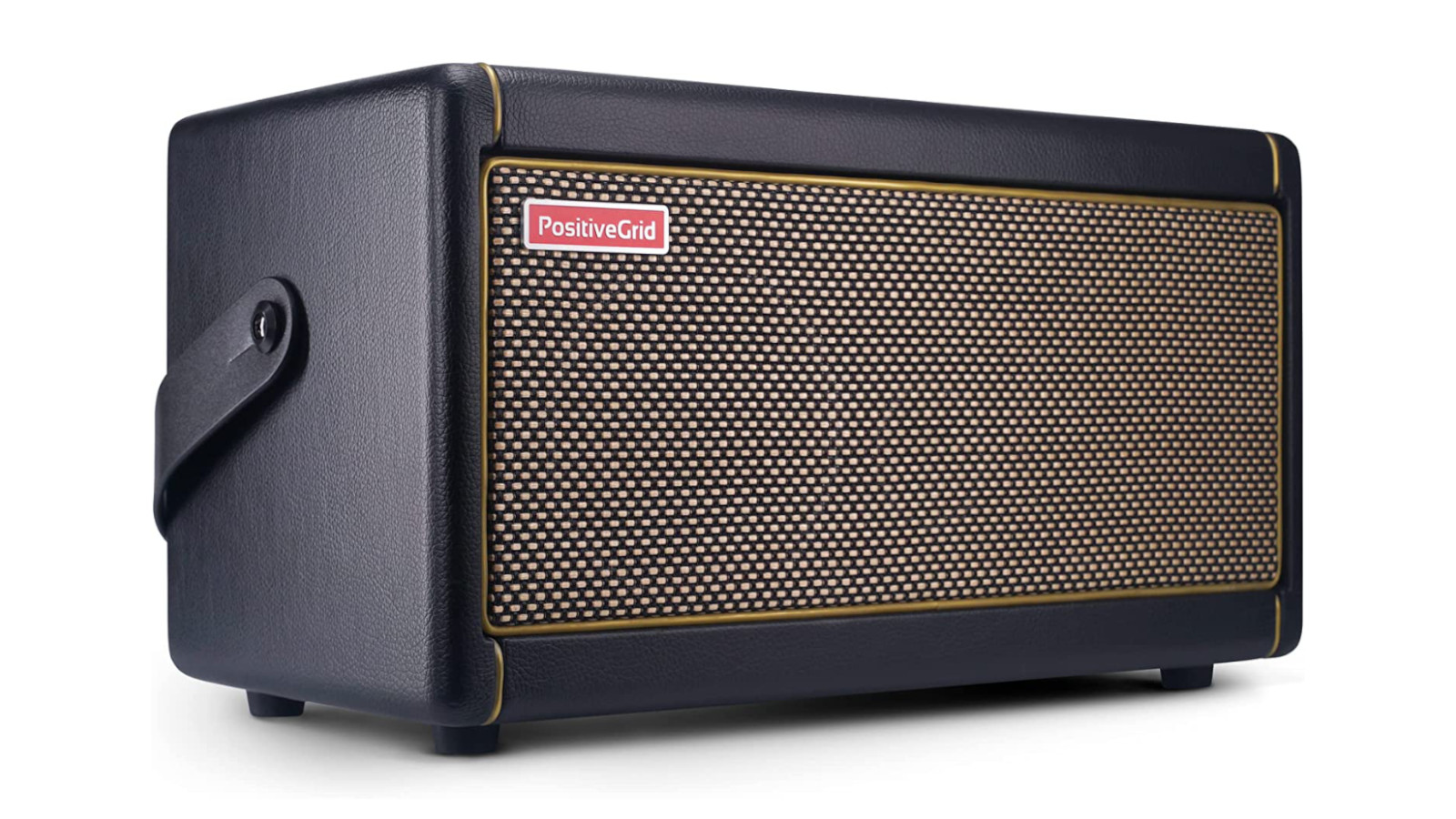
6. Positive Grid Spark 40
Our expert review:
Specifications
Reasons to buy
Reasons to avoid
Positive Grid is well known for its BIAS amp plugin that gave guitar players a lifelike tube tone at their desks. So when it announced a real-life amplifier, it wasn’t too surprising to see it get tens of thousands of preorders.
The Spark gives you a range of 30 amp tones to choose from, covering all the classic amp tones you could ever ask for. It also features acoustic and bass guitar models, giving players the option to cover different instruments too.
The Auto Chord option works out the chords for any of your favourite tracks, allowing you to play along to anything with scary accuracy. A USB connection lets you harness the power of these amazing tones in your own recordings too, making this one of the most powerful desktop amps on the market.
Read our review of the Positive Grid Spark 40
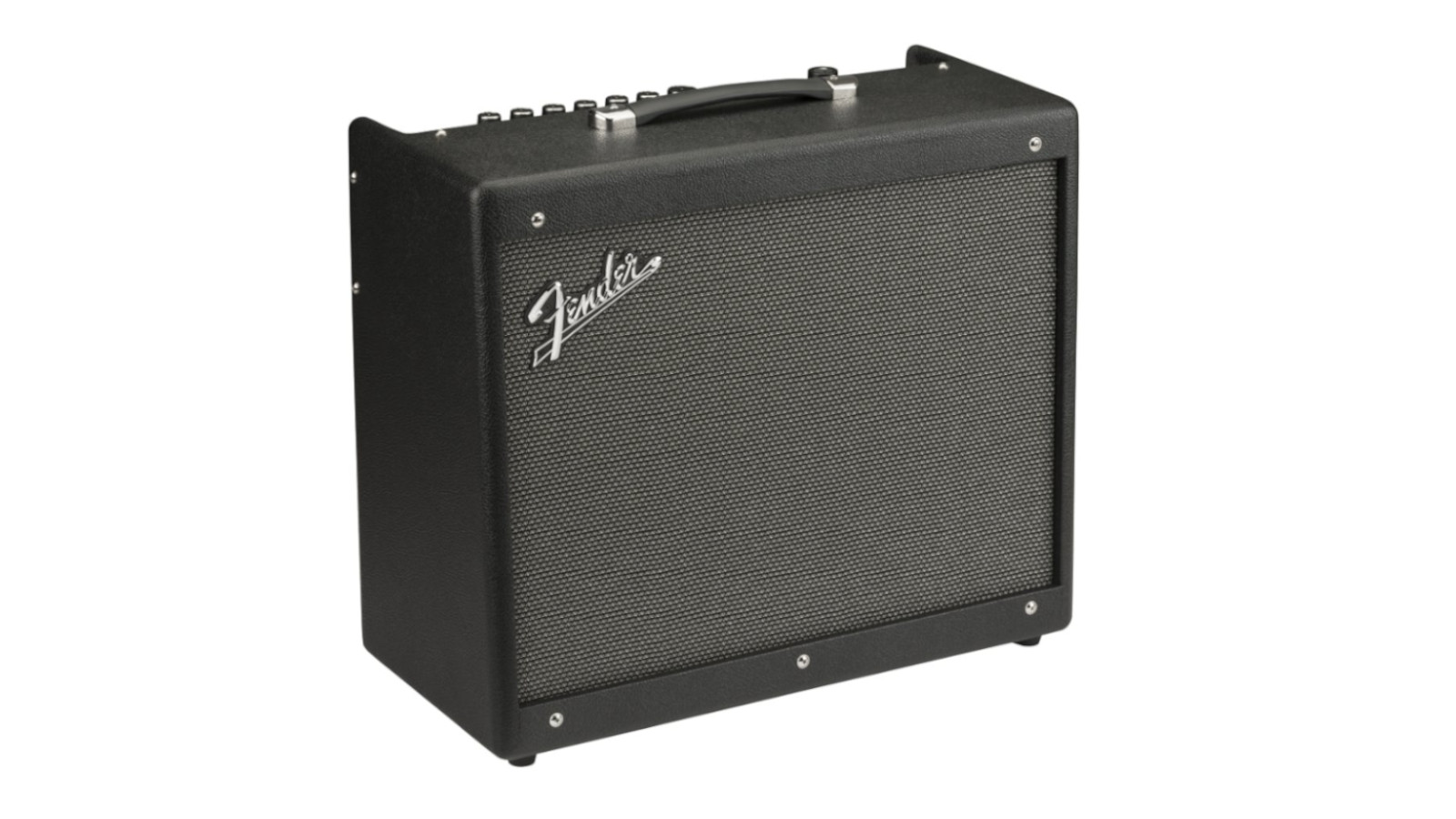
7. Fender Mustang GTX100
Our expert review:
Specifications
Reasons to buy
Reasons to avoid
The world of modelling amps is a competitive one, and the Mustang range is Fender’s finest foray with an incredible selection of amps and effects that will please even the most discerning of guitar players.
As you might expect, the opening salvo features the omnipresent Twin Reverb sound, but from then on it’s a rollercoaster ride through Orange, Marshall, and Vox emulations as you scroll through a whopping 189 presets.
An FX loop allows you to add your own effects whilst stereo recording outs make this great for the home studio. The included footswitch is great for using the onboard looper, as well as allowing you to switch presets on the fly.
Read our review of the Fender Mustang GTX100
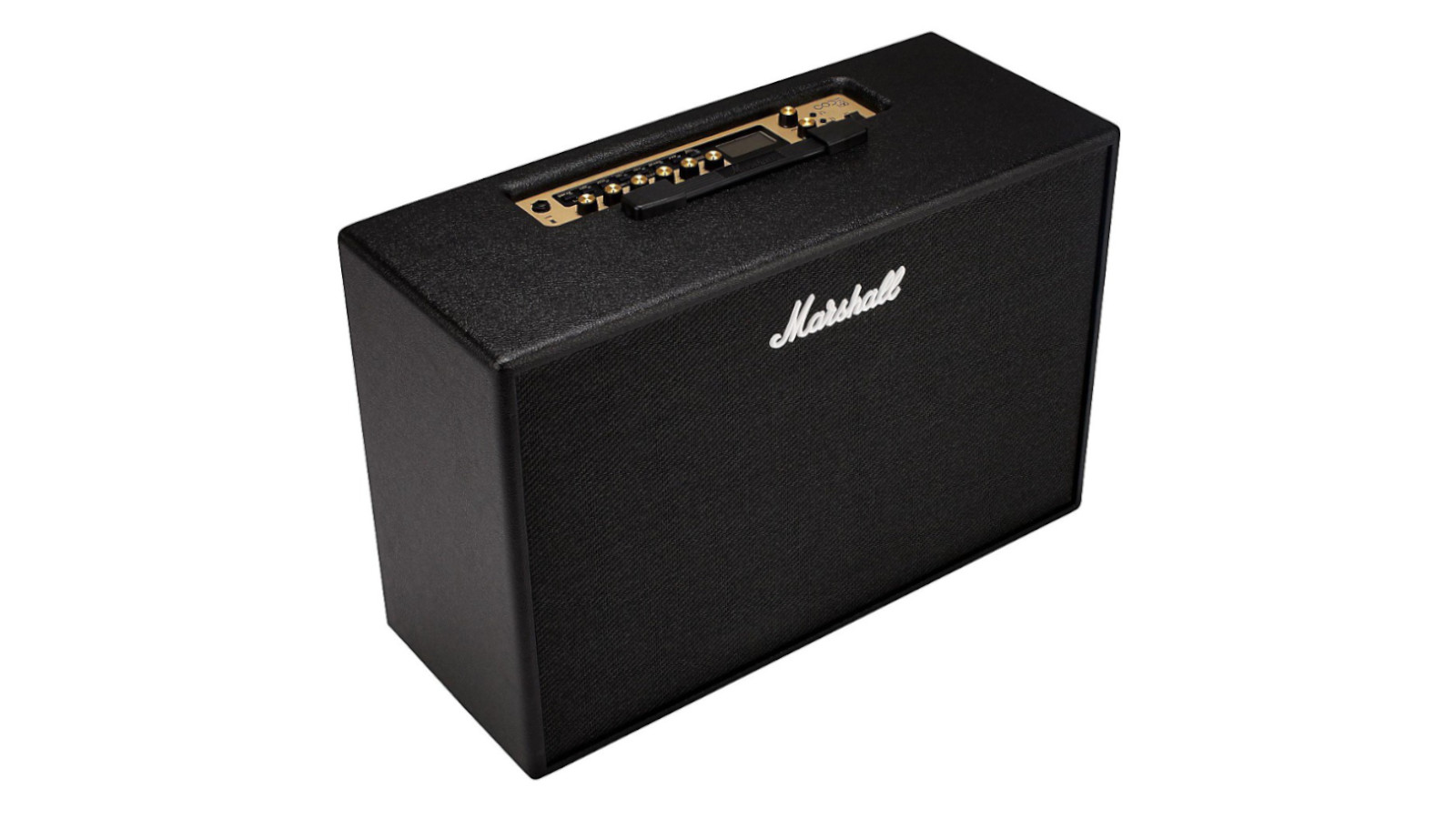
8. Marshall Code 50
Our expert review:
Specifications
Reasons to buy
Reasons to avoid
Despite the popularity of modelling amps, Marshall took its time in developing its take on the genre. Thankfully, its patience has paid off because the tones available here are about as close to classic Marshall as you can get.
You’ve got a whole range of vintage Marshall tones here, with the Plexi, JTM45, and JCM800 all making an appearance alongside various others. A few American-clean options plus some acoustic models help counterbalance the British bias.
The Gateway App works really well, allowing you to connect via Bluetooth and deep-edit your sounds. It also lets you jam along to songs, looping sections to really nail your favourite licks. With enough power to gig, this amp is incredibly versatile.
Read our review of the Marshall Code 50
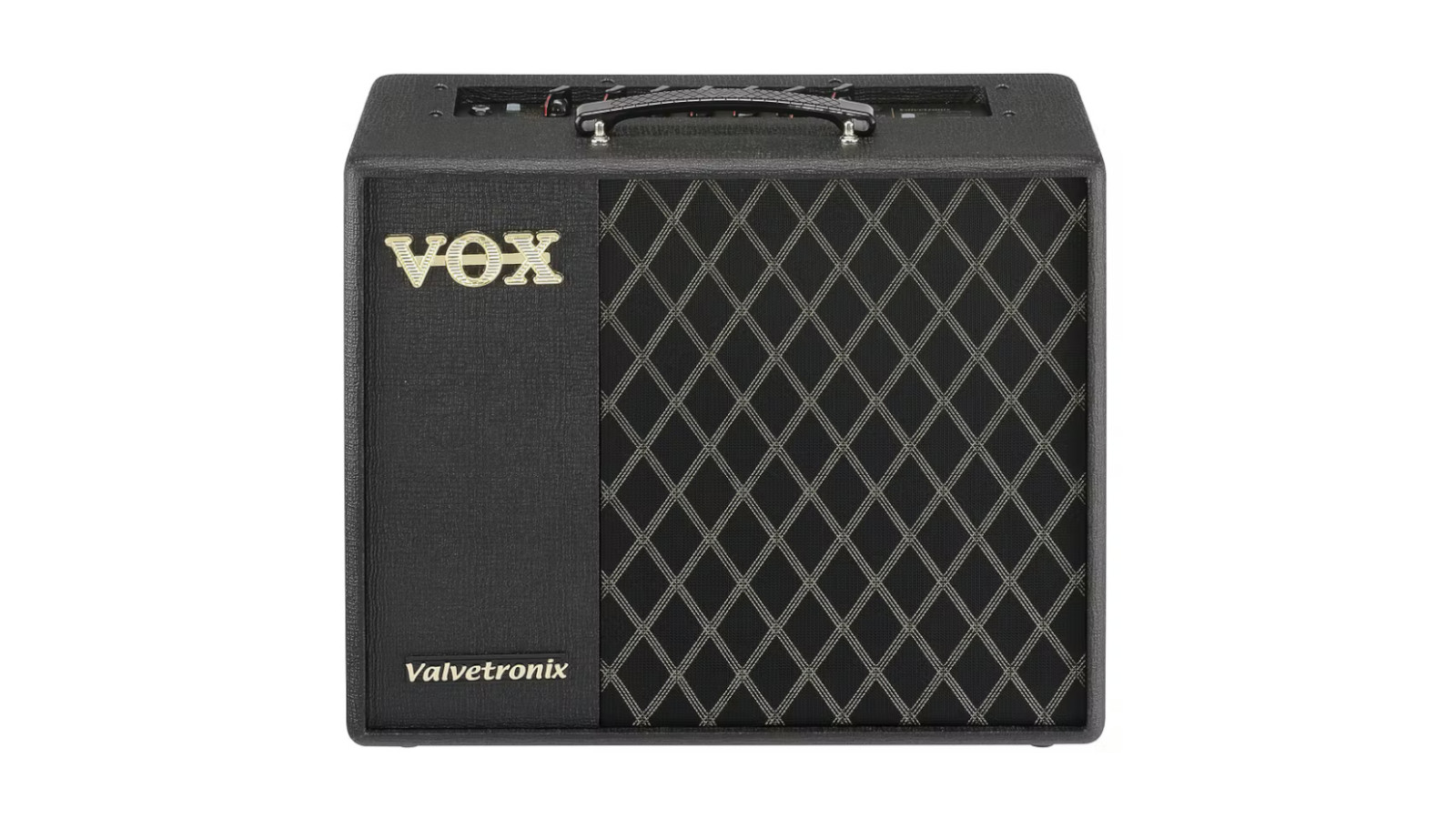
9. Vox Valvetronix VT40X
Our expert review:
Specifications
Reasons to buy
Reasons to avoid
The Vox Valvetronix range of amps has been going for a while now, outlasting many older modelling amps. This is largely due to the Valve Reactor circuit, which uses a real 12AX7 valve to deliver ultra-realistic tones.
As you’d expect, all the classic Vox tones are present here and the notoriously difficult-to-emulate AC30 sound is spot on. There are plenty of other amp models that go from country twang to high gain metal distortion, delivering plenty of versatility.
The built-in effects are all very usable too, with some great overdrive sounds, Brian May’s famous Treble Booster, and some very usable pitch-shifting effects. Vox’s Tone Room software is super easy to use, allowing for easy tweaking to find your perfect sound.
Read our review of the Vox Valvetronix VT40X

10. Line 6 Spider V 30 MKII
Our expert review:
Specifications
Reasons to buy
Reasons to avoid
This latest iteration of the every-popular Spider series sees Line 6 deliver a huge array of sounds in a tasteful-looking cabinet. With a whopping 100 presets to choose from and over 200 amps, cabinets and effects, you’ll be spoiled for choice with this amp.
The Spider V 30 MKII has all the classic amp models from AC30 to Plexi, accurately modelled with great responsiveness to your picking dynamics. The sound quality from the full-range speaker works exceptionally well at a low volume too.
The app feels really intuitive when editing your patches, as well as allowing you to upload your creations to the Line 6 CustomTone website for others to use. A metronome, looper and selection of drum loops round off the excellent features of this modelling amp.
Best modelling amps: Buying advice
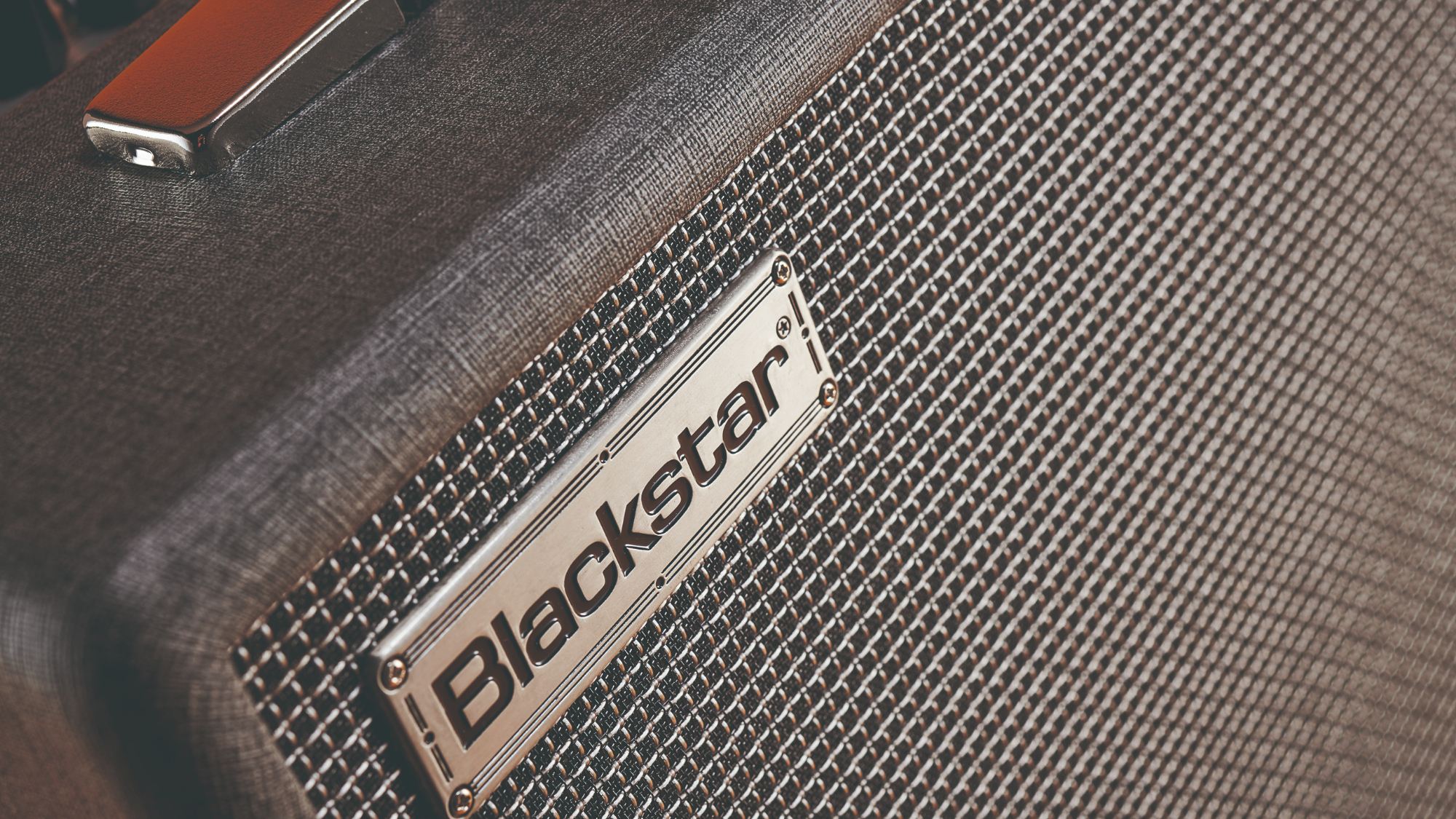
You'll be really spoiled for choice when it comes to selecting the best modelling amps and the myriad features of each may find you struggling to settle on the perfect amp for you. Here, we've answered some of the most common questions when it comes to modelling amps, to further your own knowledge and help you make an informed decision.
How do modelling amps work?
The purpose of a modelling amp is to replicate the signature sound of some of the world’s most famous, usually valve-powered, guitar amps. Modelling amps replicate the complex clipping and bias-shifting sounds of a tube amp through the use of digital signal processing or DSP. DSP is a conversion process that learns the sound of an amp and converts it into binary signals using some incredibly complicated algorithms.
In much the same way a good reverb pedal simulates a physical space for your guitar tone to occupy, a modelling amp simulates the physical way a tube or solid-state amplifier affects your tone to replicate the sound. The first attempts to do this were well off the mark, but the modern modelling amp is scarily close to the real deal nowadays, and with none of the trade-offs in terms of reliability and weight of a proper tube amp, it seems only a matter of time before they are indistinguishable from the real thing.
Are modelling amps good for gigs?
A lot of guitarists and even some professional players are now using modelling amps and floor modelers on tour. Whilst most guitarists would prefer to record with a proper tube amp, for playing live shows the advantage of modelling amps means they are often preferred to their valve counterparts. Modelling amps are less likely to fail, you won’t need to replace tubes, they don’t weigh as much, and in the unlikely event that there is a failure, they’re usually much cheaper to replace.
The idea that you need a lot of power to play gigs is pretty outdated, as even small venues mic up amplifiers nowadays. It’s far more convenient for the sound engineer to have complete control over all the levels, and stops pesky guitarists from cheekily turning up their amplifiers and drowning out the rest of the band. You’ll still want a decent amount of power in the rare case that a venue doesn’t have it’s own microphones, but we’d say anything over 50 watts will be plenty to play a gig.

Do modelling amps work well with pedals?
As a modelling amp simulates a valve amp, they do work well with pedals. You’ll need to find the right setting, but any modelling amp that simulates a great pedal platform amplifier should respond in the same way. Amps for pedals are typically clean channel amps that provide a great base tone to build your sound upon, so any model based on a classic Fender or Orange clean channel, or the classic Roland Jazz Chorus solid state amp should respond similarly to the real thing.
What’s the difference between a modelling amp and a solid-state amp?
There’s a bit of blurring between the terms modelling amp and solid-state amp. To understand the differences between the two, we need to go back to the start with the trusty tube amp. In a tube amp, vacuum tubes are used in both the preamp and power amp sections to boost your signal. When more signal is sent to the amp via the gain or volume knobs, the tubes will be pushed harder and more electrons will flow through the tubes, resulting in harmonic distortion.
Tube amps also require a transformer to help drive the speaker. In a solid-state amp, these tubes are replaced with electronic transistors that create the harmonic distortion of a driven amp. The way the transistors work means that they don’t have to be driven as hard to generate the same amount of distortion, but they don’t quite have the same richness of tone. Finally, in modelling amps, digital processors are used to imitate the function and response of tubes using digital signal processing.
Related buyer's guides
MusicRadar's got your back
- These are the best budget guitar amps under $500/£500
- Smaller budget? Try the best guitar amps under $300/£300
- Practice more with the best guitar amp headphones
- Kick off your playing career with the best beginner guitar amps
Get the MusicRadar Newsletter
Want all the hottest music and gear news, reviews, deals, features and more, direct to your inbox? Sign up here.

Matt is a Junior Deals Writer here at MusicRadar. He regularly tests and reviews music gear with a focus on audio interfaces, studio headphones, studio monitors, and pretty much anything else home recording-related. Matt worked in music retail for 5 years at Dawsons Music and Northwest Guitars and has written for various music sites including Guitar World, Guitar Player, Guitar.com, Ultimate Guitar, and Thomann’s t.blog. A regularly gigging guitarist with over 20 years of experience playing live and producing bands, he's currently studying Sound Engineering and Music Production at Spirit Studios in the UK.
“Its mission is simple: unleash the power of any amplifier or line-level source without compromise”: Two Notes promises a “watershed” in tube amp control with the Torpedo Reload II
“A pedal that sings with harmonic richness and blooming touch response”: Tone King offers up boutique tube amp tones for your pedalboard with the Imperial Preamp